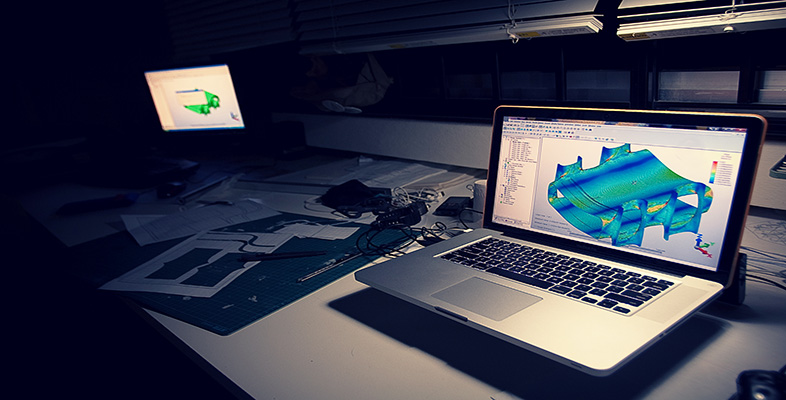1.3 Capabilities of finite element programs
Finite element codes or programs fall within two main groups:
- general-purpose systems with large finite element libraries, sophisticated modelling capabilities and a range of analysis types
- specialised systems for particular applications, e.g. air flow around/over electronic components.
While FEA systems usually offer many analysis areas, the most relevant to this course (and the most commonly used in engineering generally) are linear static structural, linear steady-state thermal, linear dynamic and, to a lesser degree, non-linear static structural. As has been mentioned, quite often, areas of analysis are coupled. For example, a common form of coupled analysis is thermal stress analysis, where the results of a thermal load case are transferred to a stress analysis. Perhaps a loaded component is subject to heat and prevented from expanding because of its physical restraints, which results in a thermally induced strain and consequent stresses within the component.
Some general capabilities of FEA codes for these main areas are summarised in Box 1. These are derived from the NAFEMS booklet by Baguley and Hose (1994). It is advisable to become familiar with these capabilities so that, faced with a particular problem, you will at least have an indication of the required form of analysis. For example, say your problem involved ‘large displacement’. In general, this would indicate that, ultimately, you would need to perform a non-linear analysis. (The meanings of the technical terms in Box 1 will be explained as and when needed in your study of the course.)
Box 1 Capabilities of finite element analysis systems
1. Linear static structural capabilities
- homogeneous/non-homogeneous materials
- isotropic/orthotropic/anisotropic materials
- temperature-dependent material properties
- spring supports
- support displacements: point, line, pressure loads
- body forces (accelerations)
- initial strains (e.g. concrete prestressing tension)
- expansion
- fracture mechanics
- stress stiffening.
2. Non-linear static structural capabilities
- material non-linearities (e.g. plasticity, creep)
- large strain (gross changes in structure shape)
- large displacements
- gaps (compression only interfaces)
- cables (tension only members)
- friction
- metal forming.
3. Linear dynamic capabilities
- natural frequencies and modes of vibration
- response to harmonic loading
- general dynamic loading
- response spectrum loading
- power spectral density loading
- spin softening.
4. Non-linear dynamic capabilities
- time history response of non-linear systems
- large damping effects
- impact with plastic deformation.
5. Linear steady-state thermal capabilities
- homogeneous/non-homogeneous materials
- isotropic/orthotropic/anisotropic materials
- temperature-dependent material properties
- conduction
- isothermal boundaries
- convection
- heat fluxes
- internal heat generation.
6. Non-linear thermal capabilities
- radiation (steady state)
- phase change (transient).
